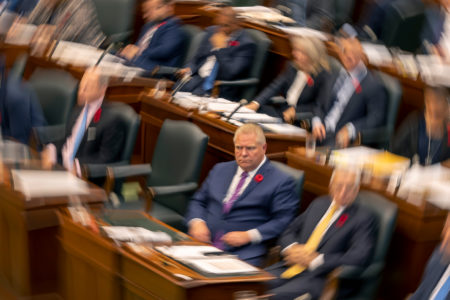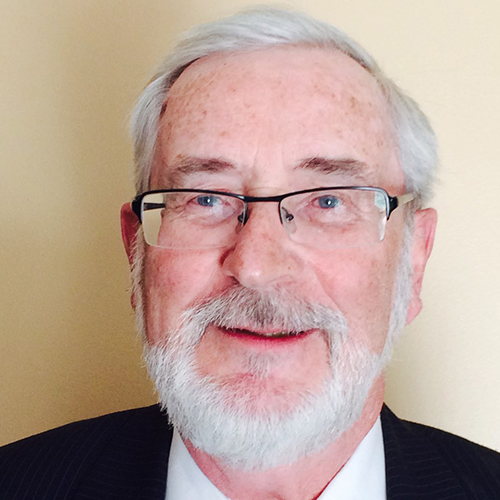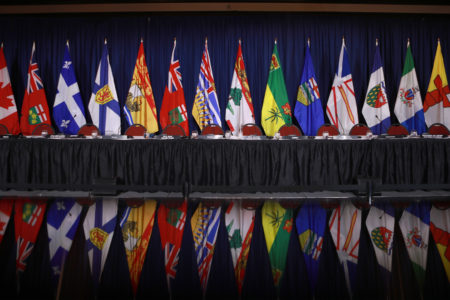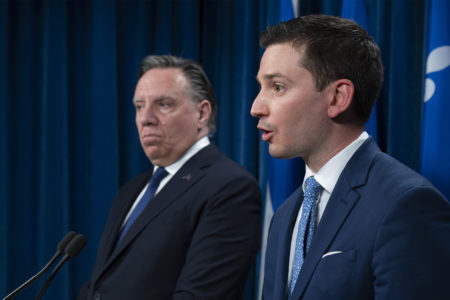
Professor Mario Polèse has done us all a great favour with his balanced analysis in Policy Options: “Quebec’s Bill 21: Is there room for more than one view of religion in Canada?” He correctly points out that most non-francophone Canadians oppose the bill. I am one of the exceptions probably because of a unique background. I taught European history, specializing in the French Revolution. I have lived in four of Canada’s five regions and am from a multi-religious family. I have written histories of every Canadian province and a history of federalism (Rivals for Power: Ottawa and the Provinces, the contentious history of the Canadian federation) that provided insights into Quebec’s relations with the rest of Canada and the reasons for the notwithstanding clause. I have worked on human rights and Indigenous issues. Finally, as a career diplomat, I lived in and studied many multi-racial and multi-religious countries.
Banning the wearing of religious symbols by those civil servants who dealt directly with the public began during the French Revolution. The issue arose during the religious wars when Catholics and Protestants conquered each other’s towns, killing everyone and perpetrating unspeakable cruelties. The way to tell friends from foes was the wearing of the cross. Revolutionary politicians addressed the problem in part by separating church from state.
Marriage certificates are essential for the legal functioning of society, so the revolutionary government required couples to conduct a civil marriage before a municipal official (state). The couple could wear religious symbols (church), but the official could not (state) because doing so could offend or even frighten the happy couple who might be Catholic, Protestant, Jewish, Muslim, atheist or agnostic. Had his right to “freedom of religion” (church in state) prevailed over theirs (church from state), chaos would have continued. That remains the policy of France and of other European countries.
In Quebec, the Quiet Revolution of the 1960s separated church from state, and civil servants who provided services to the public stopped wearing crosses. The consensus began to change, however, with the arrival of francophone Muslim immigrants from countries that have not separated church from state. Some of these immigrants insisted on indicating their religion while at work. This increasingly annoyed the Quebecois, who regard the 1960 separation of church from state as one of the most important developments in their entire history. Having civil servants demonstrate their religion was a throwback to what was now regarded as an intolerant, illiberal, inequal and bigoted past. Pressure grew to ban the wearing of all religious symbols by those civil servants who serve the public directly.
There are four sides in this dispute and all are, in a way, correct. Canadians living in Quebec should have the right to wear religious symbols. Quebecers should have the right to be served by civil servants who do not indicate their religious preference. The Quebecois should have the right to decide what laws their government passes. And Canadians have a duty to protect the rights of Canadians everywhere. The problem is that these legitimate rights are irreconcilable. The questions, then, are a) which ones will prevail and b) who will make the decisions?
While the rights of minorities in Quebec have received attention and support in the English-language media, the same cannot be said for the rights of the Quebec public. It is, however, not difficult to imagine examples of citizens who could be very upset and legitimately concerned when encountering civil servants wearing religious symbols.
Think of a car full of Jewish teenagers (with relatives in Israel) stopped by a female police officer wearing a hijab, or a car full of Muslim teenagers (with relatives in Palestine) stopped by a male police officer wearing a kippah. Think of a Bahá’í student whose relatives were killed by Muslim extremists in Iran having a teacher who wears a hijab. Think of Sikhs, Hindus and Muslims from South Asia whose relatives experienced massacres by Sikhs, Hindus and Muslims. Think of an old Cree man who suffered a decade of sexual abuse in a residential school arriving in Montreal for a colonoscopy and being confronted by health providers wearing crosses. While that may happen in English Canada without major issues, it is something that most Quebecois want to avoid because of the unique role of the church before the 1960s.
When Bill 21 was passed, Prime Minister Justin Trudeau mused that governments should not be involved in matters of personal clothing, but his own government’s Criminal Code prohibits nudity. All Canadian governments force their citizens to choose between faith and career because many jobs require work on Sundays and Fridays, and devout Christians or Jews who insist on honouring their Sabbath cannot demand those jobs. Others may be barred from certain jobs if their headgear, beards or other practices present a health or safety problem. These people all chose between faith and career. There is nothing new here.
The notwithstanding clause is one of the most controversial and misunderstood elements in the Constitution. The proposed changes of the early 1980s clearly indicated a transfer of power from legislatures to the judiciary and ultimately the Supreme Court.
Provinces were very concerned with the idea of federally appointed justices overturning their legislation and with the possibility of six judges from English Canada overturning laws passed by the Quebec National Assembly, or the risk of six judges from Central Canada overturning laws passed in the eight smaller provinces.
Back in 1867, the main point of adopting a federal system was to avoid this “dictatorship of the majority.” After bitter debate in the early 1980s, Ottawa accepted that in certain cases the Supreme Court could not overrule certain provincial laws, “notwithstanding” the additional powers provided to the courts in the new charter.
Taking Bill 21 to the Supreme Court has very serious constitutional implications. It could be overturned only if at least two justices from outside Quebec agree with the three Quebec justices. If no Quebec justices agreed to overturn it, we could see a majority of justices from outside Quebec appointed by the central government with three-quarters of its seats in the Commons from outside Quebec imposing, in effect, anglophone views on francophone Quebec. That is what federalism was designed to avoid. It would mean that five or six justices from English Canada could overrule almost any Quebec legislation. If the Quebecois then wished to remain “masters in their own house,” their only option would be separation. As the cliché goes, one should be careful what one wishes for.
Another issue may be whether the Supreme Court should even hear a case that involves potentially weakening the notwithstanding clause. That clause was deliberately designed to limit the amount of power transferred from provincial legislatures to the Supreme Court. Rejecting or weakening Bill 21 might be seen in Quebec and in other provinces as an attempt by the Supreme Court itself to weaken the limits that were deliberately put on its power by 11 elected governments.
No outcome will satisfy everyone, but the best may well be that the Supreme Court decides not to hear the case or that the six justices from outside Quebec recuse themselves. If not, Canada may stumble into one of its worst political crises ever, largely over misunderstandings of religious rights and their limitations, the purpose of federalism, the rights of minorities, and of minorities within minorities, as well as a profound misunderstanding of the notwithstanding clause.
Or perhaps the notwithstanding clause is not misunderstood, and some people actually believe that English Canadians should be able to impose their values on Quebec (and that Central Canadians should be able to impose their values on smaller provinces) and use the Supreme Court to do it, notwithstanding the notwithstanding clause.
Another solution is for people of deep faith in Quebec to accept that the public consists of millions of people of other faiths or of no faith, some of whom have had terrible experiences at the hands of members of other religions. When they encounter a civil servant, they want to know they are dealing with a neutral official, not someone who is so devout that they want the world to know their religious beliefs.
People who feel strongly about demonstrating their religion have long had a choice in Canada and elsewhere. They can avoid careers that require certain rules for everyone, regardless of religion, or they can join such careers and accept certain restraints on the display of their religion. They still have “freedom of religion,” they just don’t have freedom to practice it in a way that offends others when working in particular jobs or that violates legally accepted requirements for those jobs.
Millions of deeply religious people around the world have managed to accommodate the observance of their faith to the needs of achieving peace and harmony in multi-religious communities. Simply put, the right to “freedom of religion” does not include the right to offend members of the public when working in government jobs. Church and state are and must remain separate. History provides no other conclusion.









